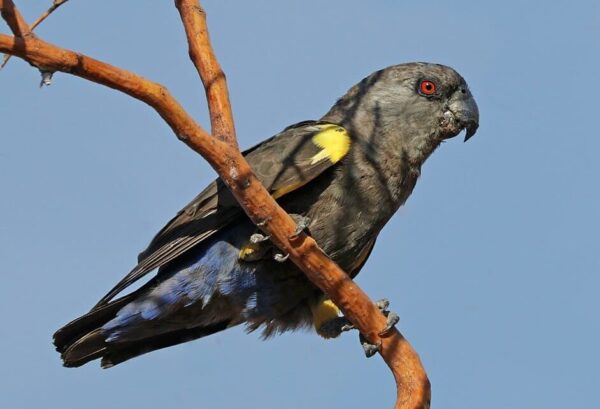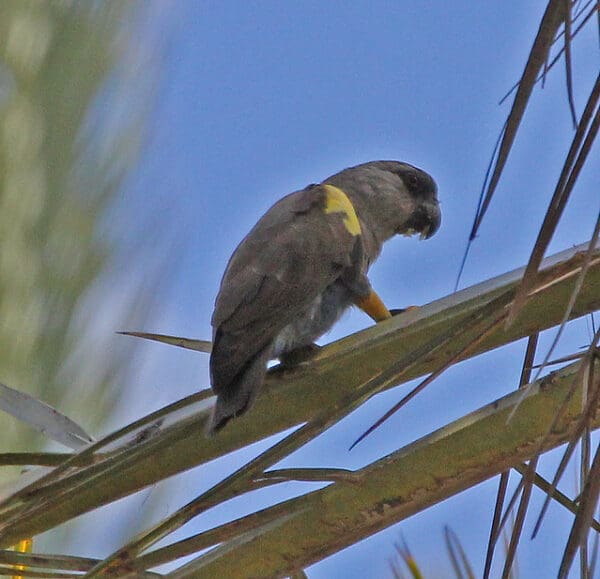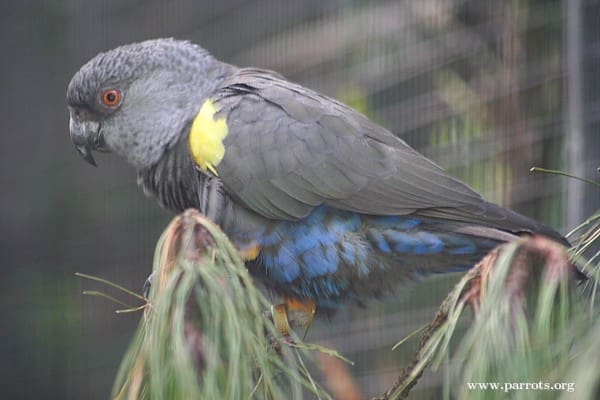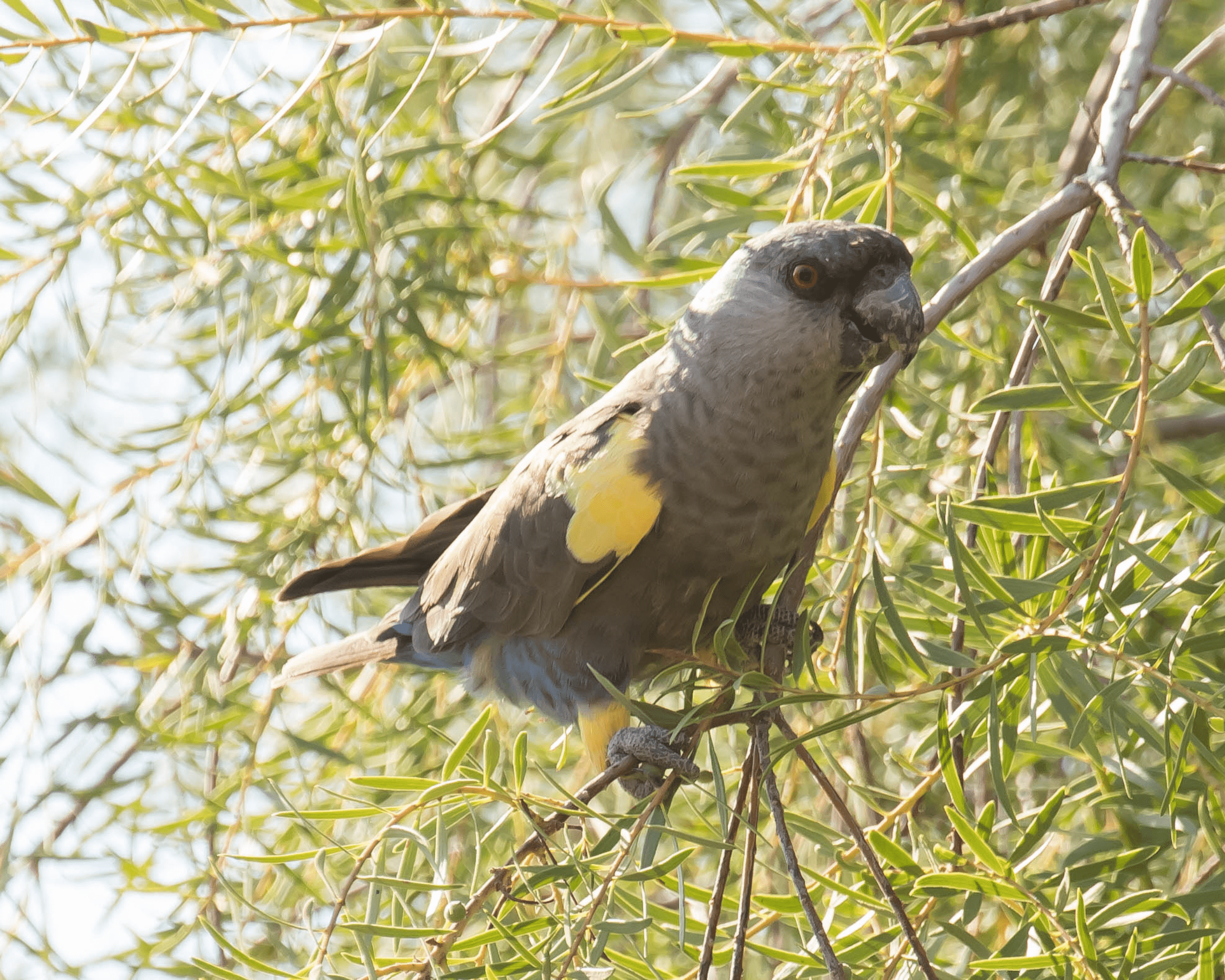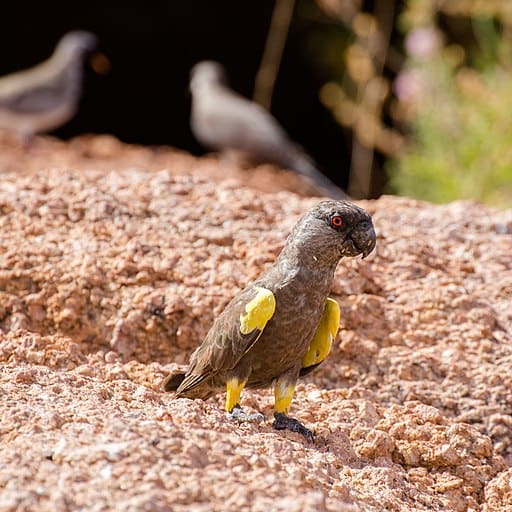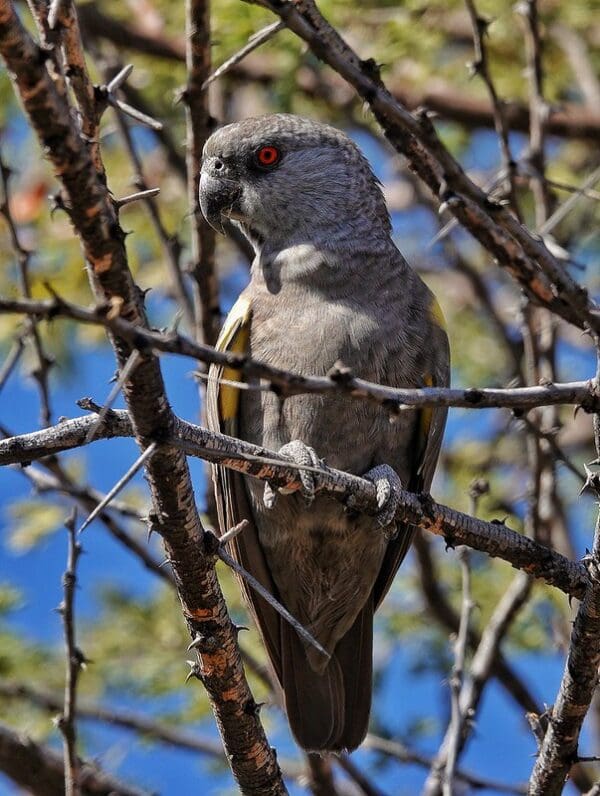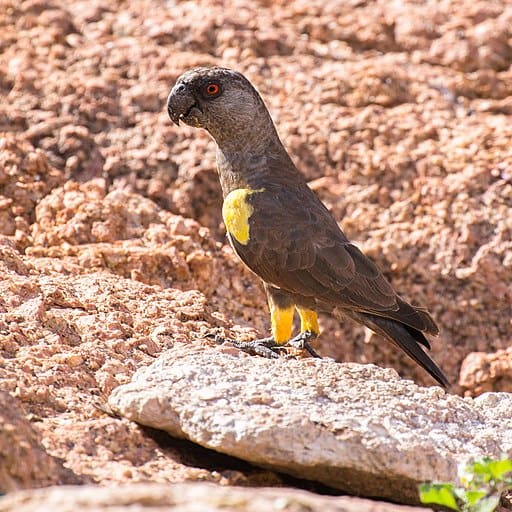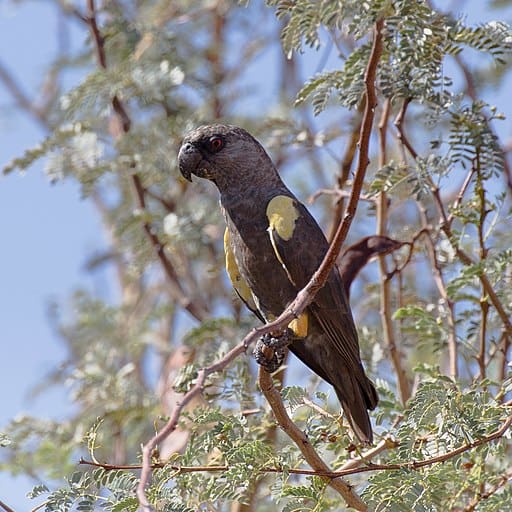Rüppell’s Parrot
Also known as:
Brown Parrot, Damara Parrot
Also known as:
Brown Parrot, Damara Parrot
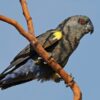
![© Jerry Oldenettel [CC BY-NC-SA 2.0] via Flickr](https://parrots.org/wp-content/uploads/2023/01/wpt_Ruppells-Parrot_1112-3-100x100.jpg)
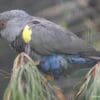
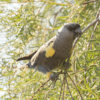
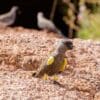
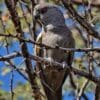
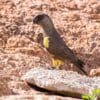
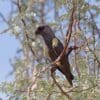
DID YOU KNOW?
Rüppell’s Parrot is named for Wilhelm Peter Eduard Simon Rüppell (1794 –1884), who was a German naturalist and explorer.

Poicephalus

rueppellii
Size:
22 cm (8.6 in)
Weight:
105-132 g (3.7-4.6 oz)
Subspecies including nominate:
one
Colour Adult:
Male– in general slate/brown colour; silver/grey ear coverts; dull blue suffusion on brown rump and undertail coverts; yellow bend of wing, lesser wing coverts and underwing coverts; yellow thighs tinted with orange. Beak grey/black. Bare cere and eye ring grey/black. Eye orange/red. Female– deep blue on lower back to upper tail coverts; duller blue on lower abdomen to undertail coverts.
Colour Juvenile:
As in female but duller plumage; rump and uppertail coverts paler; lower abdomen to undertail coverts brown washed with dull blue; brown thighs and lesser wing coverts. Beak horn-coloured. Cere and eye ring paler grey. Eye brown.
Call:
Monotonous, quick and sharp notes. Alarm calls shrieks increasing in pitch. Quieter than other Poicephalus.
More Information:
Content Sources:
CITES
Avibase
BirdLife International
Cornell Lab of Ornithology/Birds of the World
A Guide to Parrots of the World, Juniper and Parr, 1998
Parrots of the World, Forshaw and Cooper, 1977.
Psittacine Aviculture, Schubot, Clubb and Clubb, 1992.
Parrots in Aviculture, Low, 1992.
Article: Poicephalus FAQ
Captive Status:
Rare
Longevity:
—
Housing:
Walk-in aviary, minimum length 2.1 m (7 ft), or indoor cage minimum length 1.8 m (6 ft).
Diet:
Cooked beans and pulses, boiled corn; sunflower, dry, soaked or sprouted; walnuts greatly favoured; fruit such as: apple, orange, banana, rearing food (hard-boiled egg, wholegrain bread and carrot, all ground to crumbly consistency); fresh vegetables such as: carrot, celery, green beans and peas in the pod; complete pellet.
Enrichment:
Provide shallow water bowls for bathing; foot toys, destructible (non-toxic) toys, non-destructible (non-toxic plastic) toys, food-finder toys, preening toys, different texture and size hanging perch toys, fir, pine, willow or elder branches, push-and-pull toys (sliding up and down), vegetable tanned leather toys.
Nest Box Size:
Vertical box, 12″ x 12″ x 24″ (30.5 cm x 30.5 cm x 61 cm).
Clutch Size:
3 to 5
Fledging Age:
About 9 weeks.
Hatch Weight:
—
Peak Weight:
—
Weaning Weight:
—
World Population:
Unknown but reported as fairly common in suitable habitat. An estimated 9000 birds remain in Namibia. Decreasing.
IUCN Red List Status:
Least Concern
CITES Listing:
Appendix II
Threat Summary:
Not globally threatened. At risk from heavy trapping for the wild bird trade and a restricted range. This species is considered to have a medium dependency on forest habitat, and tree cover is estimated to have declined by 10.8% within its mapped range over the past three generations. It is tentatively suspected that this may have led to a 1-19% population decline over the same time frame.
Range:
Found in SW Africa – Angola and SW Namibia.
Habitat:
Found in woodlands along dried riverbeds, dry woodlands, dry steppe and thornveld, areas with tall trees. Up to 1250 m (4100 ft).
Wild Diet:
Diet includes buds, shoots, nectar, flowers of Grewia, seeds, pods of Acacia and Faidherbia, Ficus fruits, fruit endocarp of Acacia and Commiphora, seeds of Elephantorrhiza, Prosopis juliflora and Combretum imberbe; also nectar of flowering mistletoe Tapinanthus, young plant shoots and insect larvae.
Ecology and Behaviour:
Generally stays near water, in small flocks up to 20 birds; in greater numbers where food plentiful. Breeding may be more linked to rainfall than season.
Clutch and Egg Size:
3 to 5 rounded eggs, 27.0 x 24.0 mm (1 x 0.9 in).
Breeding Season:
February, Namibia; March–April, Angola; sometimes later in year. Nest is in tree limb or trunk hollow.
Related Links:
—
